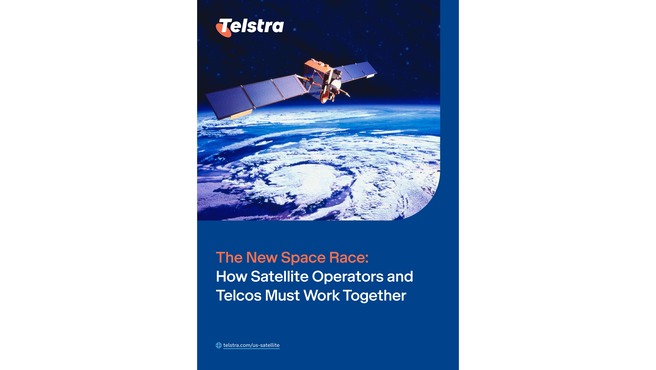7 reasons why satellite operators and telcos must work together

This is an excerpt from a white paper developed by Telstra and Capacity Media titled, “The Emerging Space Race: How Satellite Operators and Telcos Must Work Together.”
There’s a lot going on in space today: new satellite mega-constellations are springing up in multiple orbits, high-throughput satellites (HTS) have been launched into the skies, and SpaceX, OneWeb and Amazon are planning huge rollouts of satellites in a low Earth orbit (LEO) over the coming years. In light of such moves, it’s possible that space may completely transform the global connectivity landscape.
Amid this transformation, there are also major growth opportunities for telecommunications companies (telcos) and satellite operators as technologies such as 5G, edge computing and the Internet of Things (IoT) become mainstream. But telcos and satellite operators will need to work together in this emerging “space race” to maximize its potential.
Satellite operators should consider leveraging the extensive internet protocol (IP) networks that telcos already have, and their other terrestrial assets and customer relationships worldwide. Those companies that can combine assets from both worlds – space and terrestrial – stand to benefit the most in the market.
So, what does the future hold? And what steps do they need to take together to capitalize on this new frontier?
How the new space race emerged
In the 1960s, satellites started launching into a geosynchronous orbit (GEO) around 36,000 km (22,000 miles) above Earth. Due to their high cost and latency, they were traditionally used for a limited range of applications, such as in communications and emergency services in remote areas, long-distance backhaul, maritime and military services, and extractive industries (oil, gas and mining).
However, since the 2010s, more satellites have been launched in lower orbits, including medium Earth orbit (MEO) and low Earth orbit (LEO). One of the early entrants in this burgeoning space sector was SES subsidiary O3b Networks, which began in 2013 to launch MEO satellites to an altitude of 8,000 km (about 5,000 miles). This approach to satellite communications and technology decreased the costs for manufacturing, launch and maintenance. In turn, because these satellites were orbiting closer to Earth, latency became less and less of an issue.
As satellite technology has gained further traction over the past decade, it has prompted more innovation in the industry’s value chain. This has led to the development of high-throughput satellites (HTS) and swarms of LEO satellites (which sit at an altitude from hundreds to a couple of thousand kilometers), making the technology accessible to a wider range of companies and an increasing number of applications, including edge computing, IoT and more.
Many of the world’s best-known entrepreneurs have recognized the potential of such innovations in satellite technology, essentially kicking off a new space race centered on these advances. With ambitious plans, they are keen to stake their claim as the pacesetters. Here are some of the major players:
- SpaceX: the Elon Musk-led company has plans for the largest LEO constellation via its Starlink fleet. It could potentially roll out a staggering 42,000 satellites, having already put well over 1,000 small satellites in space and with plans for 12,000 by 2026.
- Amazon: the Jeff Bezos-founded company is investing more than $10 billion to ultimately launch more than 3,200 satellites in its LEO constellation.
- OneWeb: acquired last year by Bharti Global and the UK government, OneWeb has launched more than 250 LEO satellites in its planned fleet of 648, with the aim of going global next year through its wholesale model.
While the use of satellite technology for remote communications services is still a big part of the industry, other opportunities are arising. As prices and latency drop, satellite services are becoming much more competitive with and complementary to terrestrial telecommunications offerings such as those provided by subsea cable systems.
In addition, satellite services have become more enticing to a variety of companies and industries due to: 1) hugely increased bandwidth capacity demands on existing terrestrial networks; 2) the increasing requirement for always-on communication; and 3) a vastly widening set of use cases as 5G starts to take hold around the world.
For these reasons, this new space race may create some tension between the traditional telcos and satellite operators; but, for now, it makes the most sense for the players involved to see it as a symbiotic relationship in which the two sides will need each other.

This is an excerpt from a white paper developed by Telstra and Capacity Media. Download “The Emerging Space Race: How Satellite Operators and Telcos Must Work Together” for the full whitepaper.